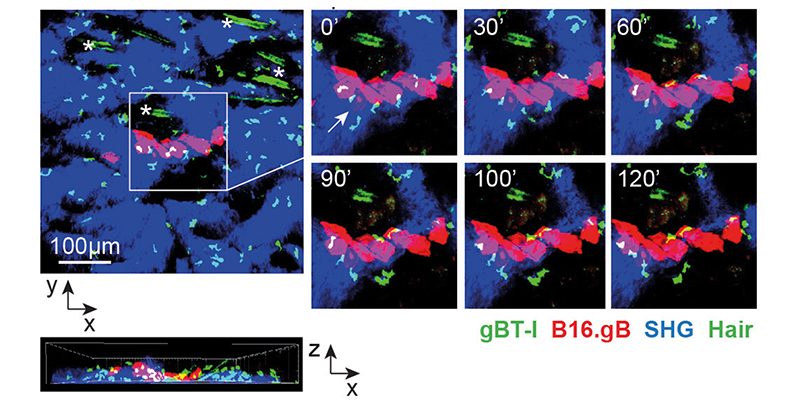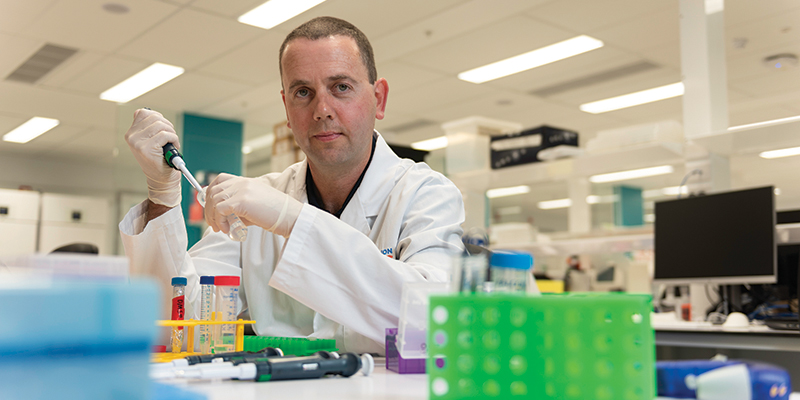First published Wednesday 10 July 2019.
Novel model leads to lightbulb moment

The ground-breaking research demonstrating how the immune systems keeps melanoma in check was made possible thanks to a novel cancer transplant model developed by Dr Waithman.
“A transplantable model is ideal as it gives us full flexibility to modify the cancer cells prior to transplantation,” Dr Waithman said. “That meant we could include multiple tags on the cancer cells, making them express different fluorescent colours and glow like a firefly. This in turn allowed us to track the cancer progression and observe the disease in action.”
Dr Waithman said the researchers took a clinically relevant strategy by targeting the outermost skin layers where melanoma naturally occurs. This involved light abrasion of skin, followed by epicutaneous application of melanoma cells.
Using his model they were able to observe outcomes reflecting distinct disease stages seen in patients, including progressively growing tumours, spontaneous metastatic spread, stably controlled small tumours, and tiny dormant melanoma lesions which persisted long-term.
“Interestingly, we saw tumour outgrowth sometimes occurring many months after inoculation – suggesting these tumours lay dormant,” Dr Waithman said.
“This was a lightbulb moment that prompted us to then ask challenging questions about how the tumours were able to remain dormant – a process caused by immune mediated equilibrium. “This led us to identify the TRM cells – leading to the exciting research which has just been published in Nature.”
